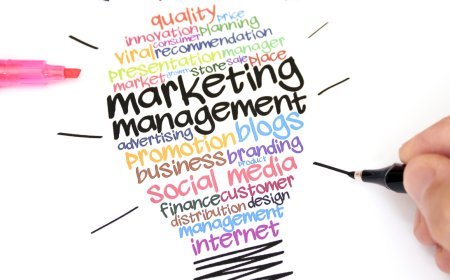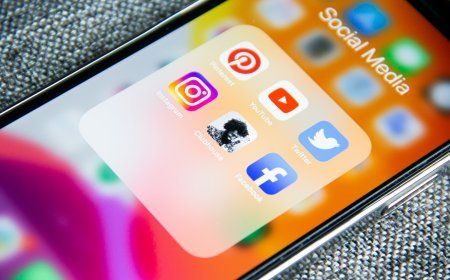Traditional Marketing vs. Digital Marketing: Why Not Both?

In 2025, businesses face a pivotal decision: should they invest in traditional marketing, digital marketing, or a strategic blend of both? While digital marketing dominates due to its precision and scalability, traditional marketing retains unique strengths in building brand trust and reaching diverse audiences. Rather than choosing one over the other, integrating both approaches can maximize reach, engagement, and ROI. This article explores the strengths and weaknesses of traditional and digital marketing and explains why a hybrid strategy is the most effective approach for businesses today.
What is Traditional Marketing?
Traditional marketing encompasses offline methods like print ads (newspapers, magazines), billboards, direct mail, TV and radio commercials, and telemarketing. These channels have been staples for decades, relying on physical or broadcast media to reach broad audiences.
Strengths of Traditional Marketing
-
Tangible Engagement: Physical materials like flyers or direct mail create a sensory connection, often leaving a lasting impression. For example, a well-designed brochure can feel more personal than an email.
-
Local Reach: Billboards, local radio, and community events excel at targeting geographically specific audiences, ideal for small businesses or regional campaigns.
-
Brand Credibility: TV commercials or print ads in reputable publications lend an air of authority, particularly for older demographics who trust established media.
-
Wide Demographic Appeal: Traditional channels effectively reach audiences less active online, such as seniors or rural populations.
Weaknesses of Traditional Marketing
-
High Costs: Producing TV ads, printing materials, or securing billboard space can be expensive, with costs often exceeding $10,000 for a single campaign.
-
Limited Measurability: Tracking ROI is challenging. For instance, it’s hard to quantify how many sales a radio ad directly generates.
-
Less Personalization: Traditional methods lack the data-driven targeting of digital campaigns, making it harder to tailor messages to specific audiences.
-
Slower Turnaround: Creating and distributing physical materials takes time, reducing flexibility in fast-paced markets.
What is Digital Marketing?
Digital marketing leverages online platforms, including social media, search engine optimization (SEO), pay-per-click (PPC) advertising, email marketing, content marketing, and influencer partnerships. It thrives on data and technology to deliver targeted, scalable campaigns.
Strengths of Digital Marketing
-
Cost-Effective Scalability: Digital campaigns can start with budgets as low as $100, with tools like Google Ads or Meta Ads allowing precise spending control.
-
Precise Targeting: Platforms use data analytics to target specific demographics, behaviors, or interests. For example, a Facebook ad can reach women aged 25-34 interested in fitness within a 10-mile radius.
-
Real-Time Analytics: Tools like Google Analytics provide instant insights into campaign performance, enabling quick adjustments to optimize results.
-
Global Reach: Digital marketing transcends geographical boundaries, allowing businesses to engage audiences worldwide with minimal effort.
Weaknesses of Digital Marketing
-
Ad Fatigue and Noise: Consumers are bombarded with online ads, leading to banner blindness or ad blockers, which reduce visibility.
-
Platform Dependency: Algorithm changes on platforms like Google or Instagram can disrupt campaign performance overnight.
-
Learning Curve: Effective digital marketing requires expertise in SEO, analytics, and platform-specific strategies, which can overwhelm small teams.
-
Privacy Concerns: Stricter regulations like GDPR and evolving consumer distrust of data collection can limit targeting capabilities.
Traditional vs. Digital: A Comparison
|
Aspect |
Traditional Marketing |
Digital Marketing |
|---|---|---|
|
Cost |
High (e.g., $5,000-$50,000 for TV ads) |
Low to high (e.g., $100-$10,000 for PPC) |
|
Reach |
Local or regional |
Global |
|
Measurability |
Limited (e.g., surveys, coupon codes) |
High (e.g., clicks, conversions) |
|
Personalization |
Broad, less targeted |
Highly targeted |
|
Speed |
Slow (days to weeks for production) |
Fast (hours to launch) |
|
Audience Engagement |
Tangible, emotional |
Interactive, data-driven |
Why Not Both? The Power of a Hybrid Approach
Rather than pitting traditional against digital marketing, businesses in 2025 can achieve superior results by combining the two. A hybrid strategy leverages the strengths of each to create a cohesive, multi-channel campaign that maximizes impact. Here’s why and how to integrate them effectively:
Complementary Strengths
-
Enhanced Brand Awareness: Traditional marketing builds trust and visibility, while digital amplifies reach. For example, a TV commercial can introduce a brand, and a follow-up social media campaign can drive engagement with targeted ads.
-
Broader Audience Coverage: Combining billboards for local awareness with SEO for online discoverability ensures you reach both offline and online audiences.
-
Improved Engagement: Direct mail can include QR codes linking to a landing page, blending tactile appeal with digital interactivity.
-
Data-Driven Optimization: Digital analytics can inform traditional campaigns. For instance, online ad data showing customer preferences can guide the messaging in print ads.
Real-World Examples
-
Retail Campaign: A clothing brand launches a TV ad to showcase its new collection, driving viewers to a website promoted via the ad. Simultaneously, they run Instagram ads targeting users who visited the site, retargeting them with discounts. Result: 20% increase in store visits and 15% boost in online sales.
-
Local Business: A restaurant uses flyers with a coupon code distributed in the neighborhood, paired with a Google Ads campaign targeting local foodies. The flyers build community trust, while the ads drive online reservations, increasing foot traffic by 30%.
-
B2B Strategy: A software company sponsors an industry conference (traditional) and follows up with LinkedIn ads targeting attendees. This blend nurtures leads across channels, resulting in a 25% higher conversion rate.
How to Implement a Hybrid Strategy
-
Define Goals and Audience: Identify whether you aim for brand awareness, lead generation, or sales. Segment your audience to determine which channels (e.g., TV for older demographics, TikTok for Gen Z) are most effective.
-
Allocate Budget Wisely: Balance spending based on ROI potential. For example, allocate 60% to digital for scalability and 40% to traditional for local impact.
-
Integrate Messaging: Ensure consistent branding across channels. Use the same tagline or visual theme in print ads and social media posts to reinforce recognition.
-
Leverage Cross-Channel Tactics: Embed digital calls-to-action in traditional media, like QR codes on posters or URLs in radio ads. Conversely, use digital retargeting to re-engage audiences exposed to traditional campaigns.
-
Measure and Adjust: Track performance using tools like Google Analytics for digital and unique promo codes for traditional. Adjust campaigns based on which channels drive the most conversions.
Challenges of a Hybrid Approach
-
Coordination Complexity: Managing multiple channels requires strong project management to ensure consistency and alignment.
-
Budget Strain: Combining both can stretch resources, especially for small businesses. Prioritize high-ROI channels to mitigate this.
-
Skill Gaps: Teams may lack expertise in both traditional and digital strategies. Consider outsourcing or training to bridge gaps.
Conclusion
Traditional and digital marketing each offer unique advantages, but choosing one over the other limits your potential. A hybrid approach in 2025 allows businesses to combine the tangible, trusted impact of traditional methods with the precision and scalability of digital campaigns. By integrating channels strategically—using data to inform decisions and ensuring consistent messaging—businesses can reach broader audiences, boost engagement, and drive measurable results. Whether you’re a small business targeting a local market or a global brand seeking mass appeal, embracing both traditional and digital marketing is the key to staying competitive in today’s dynamic landscape.
What's Your Reaction?
 Like
0
Like
0
 Dislike
0
Dislike
0
 Love
0
Love
0
 Funny
0
Funny
0
 Angry
0
Angry
0
 Sad
0
Sad
0
 Wow
0
Wow
0










